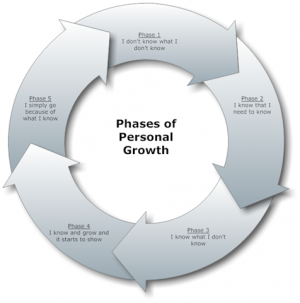 Yesterday I did some teaching with some people and the stuff didn’t go through. I am at a point where I am questioning if anything can be taught, if any change can be accomplished, if the current humanity is even able to go to the next level of evolution.
Yesterday I did some teaching with some people and the stuff didn’t go through. I am at a point where I am questioning if anything can be taught, if any change can be accomplished, if the current humanity is even able to go to the next level of evolution.
 The main obstacle I see is brain power.
The main obstacle I see is brain power.
It takes a certain amount of brain power to comprehend, honor, test, follow, see, perceive, distinguish. More than most people have.
It is probably not an accident that so many people are searching the internet for a miracle method to increase their brain power, like the Genioxole system…
 But… but you got what you have! And if what you have is not much, then no amount of exercise will give you more… maybe better tuned. Maybe.
But… but you got what you have! And if what you have is not much, then no amount of exercise will give you more… maybe better tuned. Maybe.
I am able to measure people’s brain power.
Now, I don’t know if the number I get is the same as what IQ tests measure, because I don’t have the comparison data. But the numbers are consistent over time, and the numbers are consistent with my experience of people, and their results in life.
 There is a disproportionate percentage of the population a the level of 90, just under the level where results come with work. Their self-image is that they should have more, should be able to do more than they can.
There is a disproportionate percentage of the population a the level of 90, just under the level where results come with work. Their self-image is that they should have more, should be able to do more than they can.
They are ambitious. At least in their desires. But their foundation is missing, their ability to do work without shortcuts is missing: the gap between their desires and their abilities creates a chasm.
 They don’t want to do work that they can do. They don’t want to buckle down and learn to do anything. They are the perpetual seekers. Seeking requires no brain power, finding does.
They don’t want to do work that they can do. They don’t want to buckle down and learn to do anything. They are the perpetual seekers. Seeking requires no brain power, finding does.
Seeking requires no work. Finding does.
Their biggest missing, in addition to missing the foundation school gives, is the willingness to go step by step. They abhor work. They want to jump from ‘no idea’ to ‘expert’.
 Now, this whole idea of going from zero to 60 miles an hour could be called the advertising staple of our age… so I suspect that this unwillingness to go step by step is something that most of humanity believes is their birthright: only stupid people need to go step by step, smart people jump.
Now, this whole idea of going from zero to 60 miles an hour could be called the advertising staple of our age… so I suspect that this unwillingness to go step by step is something that most of humanity believes is their birthright: only stupid people need to go step by step, smart people jump.
 Between 1999 and even today, I have been guilty of this unwillingness, even though I could, I think, claim stupidity instead, or blindness: I am mighty weak at seeing the steps, seeing the process.
Between 1999 and even today, I have been guilty of this unwillingness, even though I could, I think, claim stupidity instead, or blindness: I am mighty weak at seeing the steps, seeing the process.
We could say that the main reason I wasn’t as successful in life as I could have been by what was going for me, was the thing that was going against me: the inability to see process.
 Here is the Law of Process from Dan Millman’s book, ‘The Life You Were Born to Live’
Here is the Law of Process from Dan Millman’s book, ‘The Life You Were Born to Live’
 The Law of Process
The Law of Process
On the path to our goals if we want to get from point A to a point Z. the surest way to get there is to first go to point B. then C. then D. and so on. Skipping a single step, even though it appears to be a shortcut, often results in failure.
If you have a great ambition, take as big a step as possible in the direction of fulfilling it. The step may only be a tiny one, but trust that it may be the largest one possible for now. ~ MILDRED McAFEE
Our daily lives are filled with goals and achievements. These goals may be large, as in climbing mountains, gaining political office, or forming our own company, or they may be smaller, as in baking a cake, winning a Softball game, or doing a homework assignment.
Some of us are so occupied with our goals-leaping ahead of ourselves to the end result-that we ignore the path and the process in-between. On the other hand, some of us get so disoriented or doubtful about how to get from here to there that we have trouble even setting our goals, or we get stuck on one step, suffering from tunnel vision.
It helps to remember that if we want to climb a mountain, we need to form a goal, set out a direction, prepare well, and proceed in small, sure steps. We can break down any achievement, no matter how large or imposing, into discrete, manageable steps. If we want to ford a stream, we find the individual stepping-stones. If we try to leap over too many steps, sooner or later were going to slip.
The Law of Process teaches us not only to break a journey into shorter sections but also to appreciate each step as if it were an end in itself. Every step becomes a small success in itself; that way, we succeed many times, not just when we reach our final goal. What we learn on the journey may turn out to be more important than reaching the destination. For example, If we spend twenty years learning to paint portraits and then all our paintings are destroyed, we have still gained inner qualities on the road to our goal, including an ability to see with different eyes and better appreciate the beauty in every face.
Those of us working through process issues need to ask ourselves whether we want to be like the mail carrier who rushed to complete the shift every day and ‘get off work’ or the mail carrier who delighted in the changing scene of the neighborhoods each day, saying hello to people on the street while walking at a smooth and measured pace. Many of us live only for the big highs, but forget that each small step up the mountain is higher than the last.
Here’s another example of the Law of Process:
Patrick had just come into some money when he noticed that a neighborhood restaurant was going out of business. ‘What an opportunity!’ he said to himself. He bought the business, hired the existing staff, kept the same menu, and put up a new sign, ‘Under New Management,’ thinking that under his charismatic leadership, business would boom. The business failed again, the way most new ventures fail and for the same reason: Patrick didn’t go through all of the steps of the process. He wanted to get to the end product right away.
Joshua, on the other hand, came into a little money and saw a ‘Going Out of Business’ sign on a local restaurant. He did his homework: He interviewed restaurant owners and learned the pros and cons of the business. He learned that the three most important things for a restaurant to succeed are location, location, and location.
He found out that the location for this restaurant wasn’t the problem; something else had caused it to fail. So he did a demographic study and called two hundred people in the area, at random, to ask them how often they went out to eat and what types of food they liked. Based on what he learned, he decided to open Joshua’s Deli Delights Restaurant. He then spent some time in area restaurants, offering to help wherever he could; he observed and spoke with dishwashers, food servers, cooks, hosts, and managers so he would know what questions to ask on job interviews.
Finally, after finding out where to get the best supplies at the best prices, hiring the best staff he could, and making all the necessary preparations, Joshua had covered all of the steps. His success was not merely luck, good fortune, or a surprise. Joshua had mastered the Law of Process and demonstrated that by building a stable foundation based upon careful preparation and following a patient process, we can reach any goal. We can achieve anything if we break it down into manageable parts.
The following exercises can help you achieve alignment with the Law of Process through direct experience and application.
Experiencing Process
1. Reflect upon how you learned to play a musical instrument or a sport, to drive a car, or to walk or talk. Did it happen all at once, or was it a step-by-step, trial-and-error process?
2. Observe how houses and skyscrapers are built from the ground up, a little at a time. Consider how much energy and planning it takes. What does this say about how to accomplish anything in life?
Applying the Law of Process
1. Observe in your own life the many processes you go through each day just in getting dressed, getting the kids off to school, going to work, or going to classes; each of these involves hundreds of small steps.
2. A very good way to reinforce the Law of Process involves building a model plane or model house, or putting together any kind of craft.
3. Pay attention to the many small steps in your life.
4. Break any present goal down into small steps; write them down and make a checklist. See the stepping-stones from where you are to where you want to be.
P.S.: Raising your vibration is a step by step process. You need to go step by step, and then build on what you already have accomplished, so it needs to form a firm foundation. Near impossible for many people.


It just occurred to me that I’m like a child-not knowing anything-who has years of poor habits, now, with grown-up responsibilities which make getting into the “extracurricular activities that activate capacities beyond the base capacities” even more challenging. Sh*t! No wonder people like me are so draining. Jeez
Also, finding the breakdown of what the steps in the process can be a little fun. Like curiously exciting, especially if I’m excited about the goal. 🙂
I think I have one: I can put all of my energy into the smallest next step I can find in the way to my goal.
but more challenging is still only challenging.
sure. if you have the capacity of process, especially
thank you for taking it so cheerfully… this is one of the bitter pills I am still not happy to take… Arrogance works very much against the law of process…
This is my biggest issue and a wake up call for me. Thank you for pointing it out so clearly to me that I will never accomplished anything unless I apply the law of process in my life.